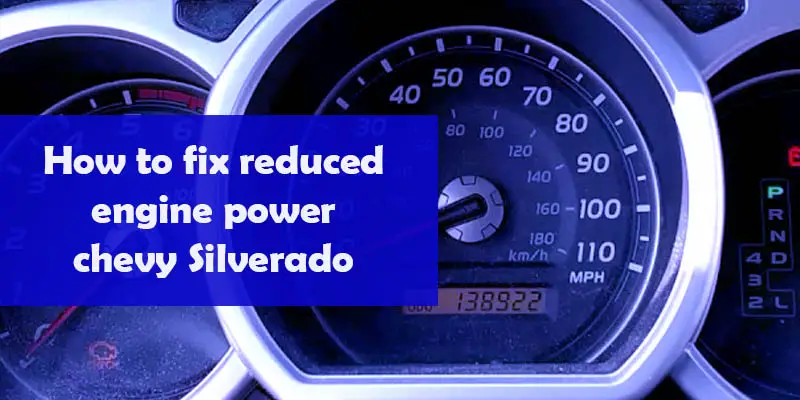Reduced engine power in a Chevy Silverado can be caused by a variety of issues, here are some possible causes and solutions:
- Throttle Control Motor: The Throttle Control Motor may be malfunctioning, causing the engine to lose power. This can be fixed by replacing the Throttle Control Motor.
- Throttle Body: The Throttle Body may be clogged or dirty, causing the engine to lose power. This can be fixed by cleaning or replacing the Throttle Body.
- Mass Air Flow Sensor: The Mass Air Flow Sensor may be malfunctioning, causing the engine to lose power. This can be fixed by replacing the Mass Air Flow Sensor.
- Fuel Filter: A clogged fuel filter can cause the engine to lose power. This can be fixed by replacing the fuel filter.
- Gas Pedal Sensor: The gas pedal sensor may be malfunctioning, causing the engine to lose power. This can be fixed by replacing the gas pedal sensor.
- Engine Control Module: The Engine Control Module (ECM) may be malfunctioning, causing the engine to lose power. This can be fixed by replacing the Engine Control Module.
- Exhaust Restriction: If there’s a restriction in the exhaust system, it can cause the engine to lose power. This can be fixed by having the exhaust system inspected and repaired as necessary.
- low or dirty transmission fluid. Check the transmission fluid level and condition, if low, or dirty, change the fluid and filter and check for any leaks.
It’s important to note that these are just a few of the possible causes of reduced engine power, and it’s best to have a qualified mechanic diagnose the problem to determine the exact cause and recommend the appropriate repair.
How do you fix a reduced engine power on a Chevy?
Here are some steps you can take to try to fix reduced engine power on a Chevy:
- Check the Throttle Control Motor: The Throttle Control Motor may be malfunctioning, causing the engine to lose power. Inspect the throttle control motor for any physical damage, or check for any stored codes and diagnostic trouble codes (DTCs) related to the throttle control motor.
- Check the Throttle Body: The Throttle Body may be clogged or dirty, causing the engine to lose power. Inspect the throttle body for any debris or buildup, and clean it if necessary.
- Check the Mass Air Flow Sensor: The Mass Air Flow Sensor may be malfunctioning, causing the engine to lose power. Inspect the mass air flow sensor for any physical damage, or check for any stored codes and diagnostic trouble codes (DTCs) related to the mass air flow sensor.
- Check the Fuel Filter: A clogged fuel filter can cause the engine to lose power. Inspect the fuel filter for any debris or buildup, and replace it if necessary.
- Check the Gas Pedal Sensor: The gas pedal sensor may be malfunctioning, causing the engine to lose power. Inspect the gas pedal sensor for any physical damage, or check for any stored codes and diagnostic trouble codes (DTCs) related to the gas pedal sensor.
- Check the Engine Control Module: The Engine Control Module (ECM) may be malfunctioning, causing the engine to lose power. Inspect the engine control module for any physical damage, or check for any stored codes and diagnostic trouble codes (DTCs) related to the engine control module.
- Check the Exhaust Restriction: If there’s a restriction in the exhaust system, it can cause the engine to lose power. Inspect the exhaust system for any restrictions, such as clogged catalytic converters or mufflers, and repair or replace any parts as necessary.
- Check the transmission fluid level and condition, if low, or dirty, change the fluid and filter and check for any leaks.
It’s important to note that these are just a few of the possible causes of reduced engine power, and it’s best to have a qualified mechanic diagnose the problem to determine the exact cause and recommend the appropriate repair.
